MAGIC IN THE SKY Gerard Dillon (1916-1971)
Signature: signed lower left; with typed Dillon Retrospective Exhibition label on reverse; with title inscribed on stretcher on reverse; also with Dawson Gallery framing label on reverse Medium: oil on canvas Dimensions: 76 by 88cm., 30 by 34.5in. Exhibited: Exhibited:'Irish Exhibition of Living Art', 1968; 'Gerard Dillon Retrospective', Municipal Gallery of Modern Art, Dublin, 15 January - 4 February, 1973, catalogue No. 94 Literature: Literature:White, James, Gerard Dillon An Illustrated Biography, Wolfhound Press, Dublin, 1994, p. 93 and p. 105 (illustrated) Magic in the Sky belongs to the series of imaginative paintings that Gerard Dillon created during the 1960s, which feature the clown Pierrot. Unusually, in this case Pierrot appears as an outline susp... pended in the sky and surrounded by other less distinct figures all floating along as if in limbo between heaven and earth. Below, three silhouetted figures who may also be clowns, gaze upwards towards their companion in the sky. The intense red earth and yellow sky enhance the otherworldly qualities of the landscape and suggest that this is a dreamscape or the product of the artist’s imagination. As James White pointed out in his book Gerard Dillon An Illustrated Biography, Dillon used Pierrot as an alter ego. The clowns Pierrot and Harlequin are popular tropes in art history. During the eighteenth century they appeared in the works of French and Italian painters including Watteau and Tiepolo, where they referenced the Commedia dell’Arte theatre tradition. In the first decades of the twentieth century both Pierrot and Harlequin were adopted by Modernists including Pablo Picasso Georges Braque and Juan Gris whose Pierrot (1921) was among the paintings donated to the National Gallery of Ireland by Marie MacNeill Sweeney. Both in his origins in the Commedia dell’Arte and in his reinvention as a Modernist trope, Pierrot was associated with disguised identity, melancholia and gender confusion. One of Dillon’s first paintings to include Pierrot is The Brothers (c.1965) which depicts the clown crying over a grave where three skeletons are visible. White argues that the skeletons represent Dillon’s three brothers all of whom had recently died young from heart complaints. In this reading Pierrot is the artist mourning his brothers and fearing that he will soon follow them to an early grave. Sadly, Dillon’s prediction was correct and he died from a heart related illness in 1971 when he was only fifty-five years old. During the last years of his life, which were spent in Dublin, Dillon painted a series of images of Pierrot often in imaginary landscapes. Through these works he often commented on issues, including politics, religion and sexuality, that the conservative nature of Irish culture made it difficult to address directly. In Magic in the Sky, the three silhouetted figures may represent Dillon’s three dead brothers watching the insubstantial figure of Pierrot floating through the sky above. Whether the landscape they inhabit represents heaven or some sort of limbo is unclear. In either case the imagery does not follow any conventional religious doctrine and certainly not the teachings of the Catholic Church in which Dillon was raised. Despite the melancholy subject matter of the Pierrot paintings, the images are imbued with a sense of serenity that suggests Dillon had come to terms with his fate. In one of his last paintings, Self-Portrait with Pierrot and Nude painted in 1971 (National Gallery of Ireland) Dillon presents a candid image of his features with Pierrot and a stack of canvases in the background. Perhaps the only image where both artist and alter ego appear together, this painting can be interpreted as a record of Dillon’s acceptance of his own mortality. Dr Riann Coulter April, 2010 Dr. Coulter was curator of ‘Nano Reid and Gerard Dillon’, Highlanes Municipal Gallery, Drogheda and F.E. McWilliam Gallery and Studio, Banbridge 30 January- 2 May 2010 more
MAGIC IN THE SKY Gerard Dillon (1916-1971)
Signature: signed lower left; with typed Dillon Retrospective Exhibition label on reverse; with title inscribed on stretcher on reverse; also with Dawson Gallery framing label on reverse Medium: oil on canvas Dimensions: 76 by 88cm., 30 by 34.5in. Exhibited: Exhibited:'Irish Exhibition of Living Art', 1968; 'Gerard Dillon Retrospective', Municipal Gallery of Modern Art, Dublin, 15 January - 4 February, 1973, catalogue No. 94 Literature: Literature:White, James, Gerard Dillon An Illustrated Biography, Wolfhound Press, Dublin, 1994, p. 93 and p. 105 (illustrated) Magic in the Sky belongs to the series of imaginative paintings that Gerard Dillon created during the 1960s, which feature the clown Pierrot. Unusually, in this case Pierrot appears as an outline susp... pended in the sky and surrounded by other less distinct figures all floating along as if in limbo between heaven and earth. Below, three silhouetted figures who may also be clowns, gaze upwards towards their companion in the sky. The intense red earth and yellow sky enhance the otherworldly qualities of the landscape and suggest that this is a dreamscape or the product of the artist’s imagination. As James White pointed out in his book Gerard Dillon An Illustrated Biography, Dillon used Pierrot as an alter ego. The clowns Pierrot and Harlequin are popular tropes in art history. During the eighteenth century they appeared in the works of French and Italian painters including Watteau and Tiepolo, where they referenced the Commedia dell’Arte theatre tradition. In the first decades of the twentieth century both Pierrot and Harlequin were adopted by Modernists including Pablo Picasso Georges Braque and Juan Gris whose Pierrot (1921) was among the paintings donated to the National Gallery of Ireland by Marie MacNeill Sweeney. Both in his origins in the Commedia dell’Arte and in his reinvention as a Modernist trope, Pierrot was associated with disguised identity, melancholia and gender confusion. One of Dillon’s first paintings to include Pierrot is The Brothers (c.1965) which depicts the clown crying over a grave where three skeletons are visible. White argues that the skeletons represent Dillon’s three brothers all of whom had recently died young from heart complaints. In this reading Pierrot is the artist mourning his brothers and fearing that he will soon follow them to an early grave. Sadly, Dillon’s prediction was correct and he died from a heart related illness in 1971 when he was only fifty-five years old. During the last years of his life, which were spent in Dublin, Dillon painted a series of images of Pierrot often in imaginary landscapes. Through these works he often commented on issues, including politics, religion and sexuality, that the conservative nature of Irish culture made it difficult to address directly. In Magic in the Sky, the three silhouetted figures may represent Dillon’s three dead brothers watching the insubstantial figure of Pierrot floating through the sky above. Whether the landscape they inhabit represents heaven or some sort of limbo is unclear. In either case the imagery does not follow any conventional religious doctrine and certainly not the teachings of the Catholic Church in which Dillon was raised. Despite the melancholy subject matter of the Pierrot paintings, the images are imbued with a sense of serenity that suggests Dillon had come to terms with his fate. In one of his last paintings, Self-Portrait with Pierrot and Nude painted in 1971 (National Gallery of Ireland) Dillon presents a candid image of his features with Pierrot and a stack of canvases in the background. Perhaps the only image where both artist and alter ego appear together, this painting can be interpreted as a record of Dillon’s acceptance of his own mortality. Dr Riann Coulter April, 2010 Dr. Coulter was curator of ‘Nano Reid and Gerard Dillon’, Highlanes Municipal Gallery, Drogheda and F.E. McWilliam Gallery and Studio, Banbridge 30 January- 2 May 2010 more

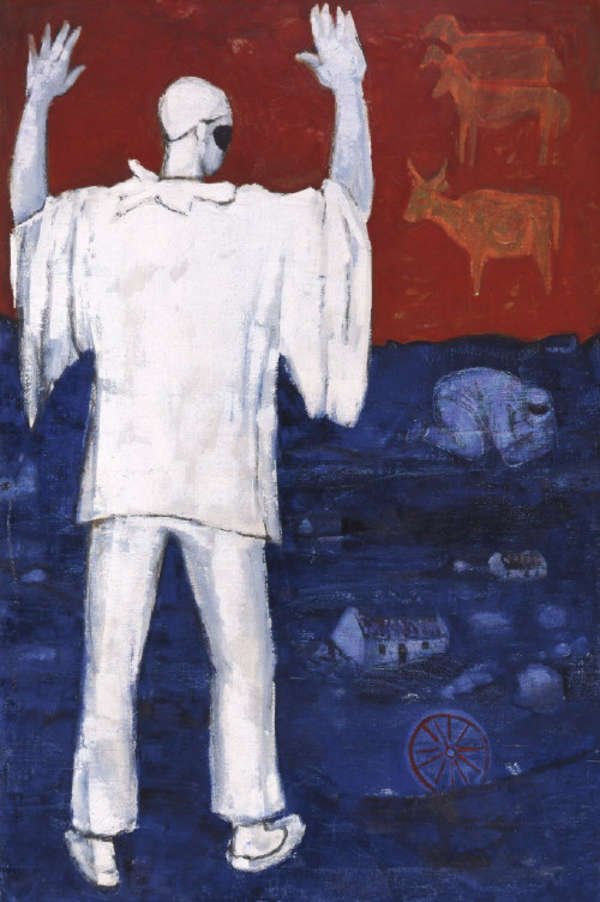
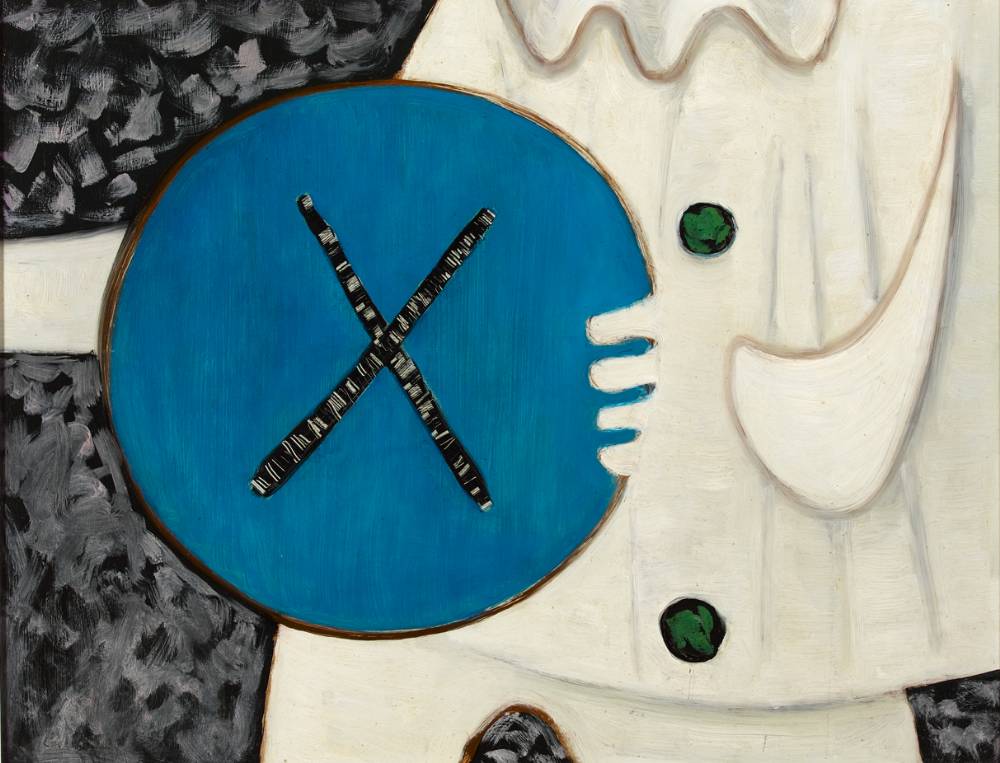



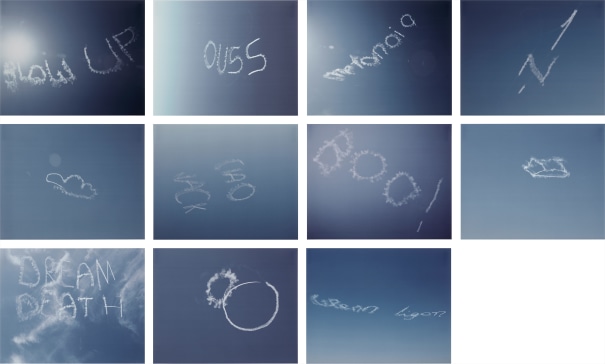

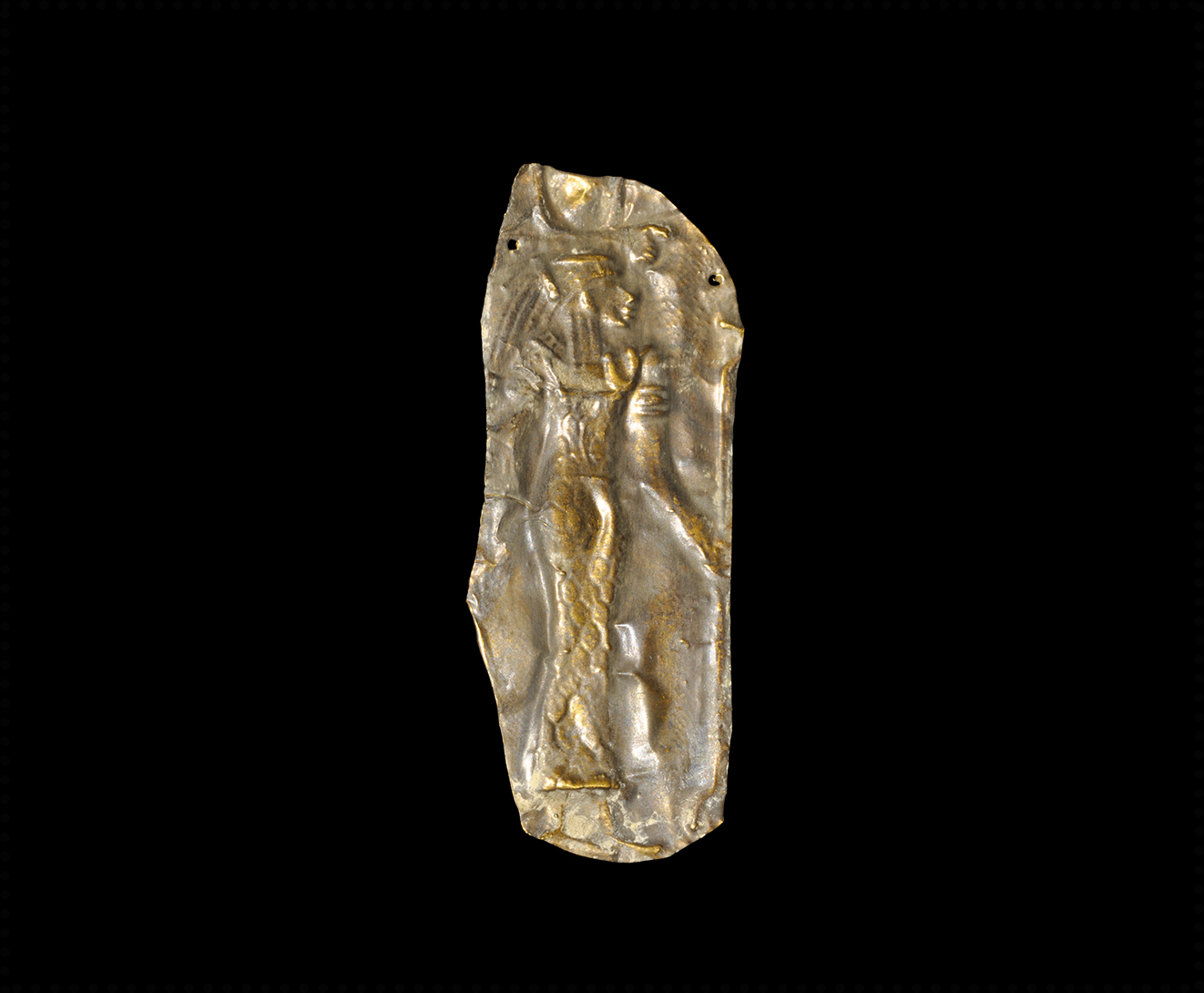


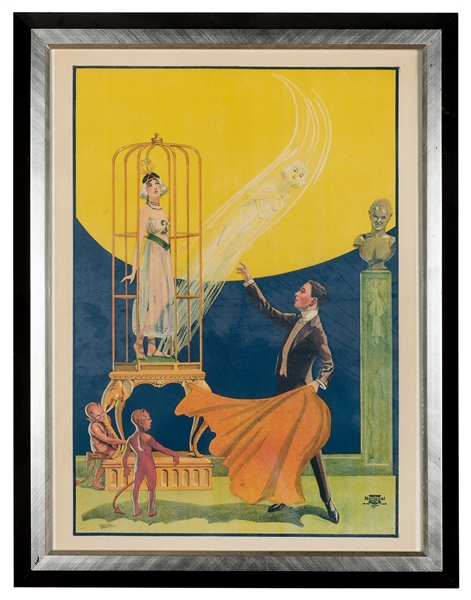


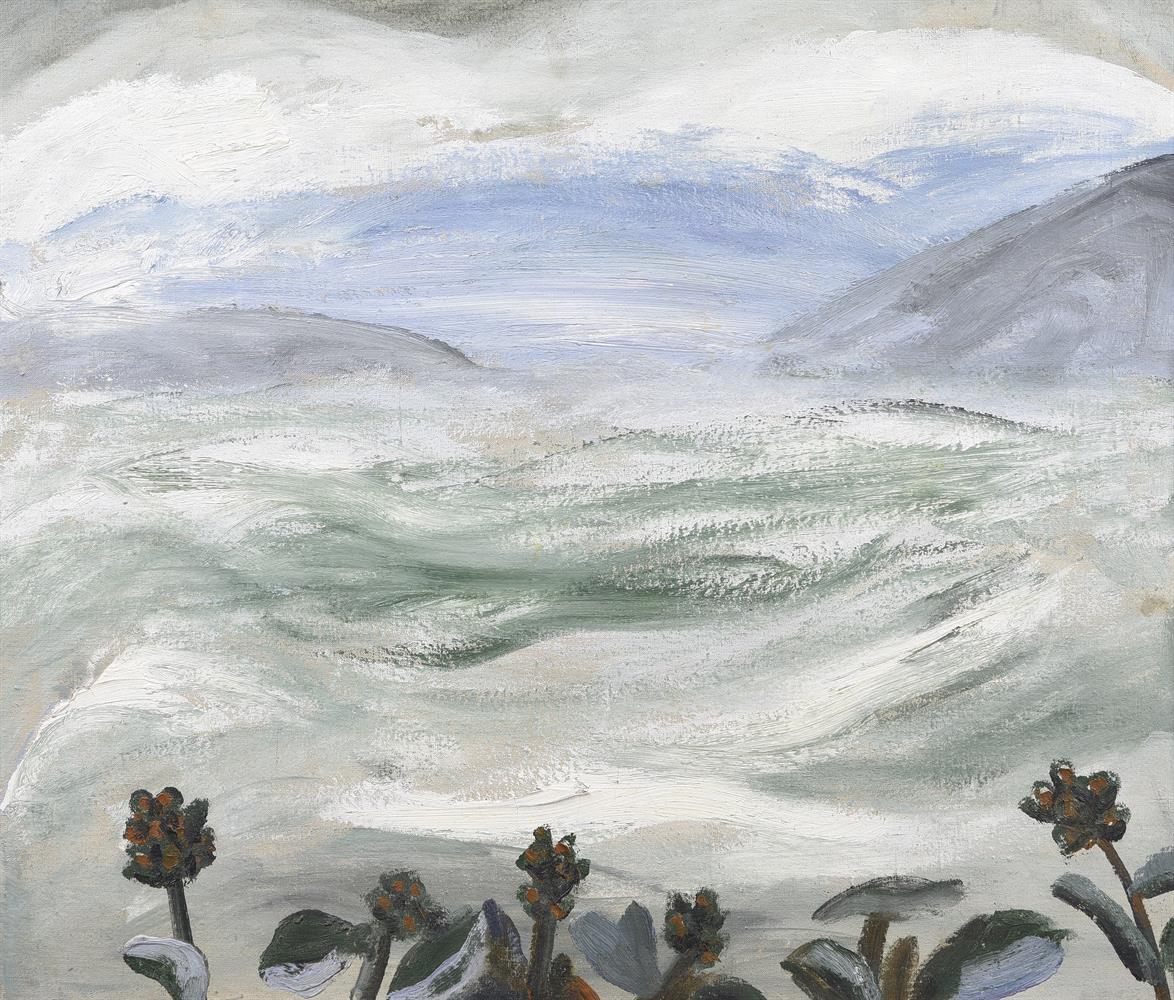
Try LotSearch and its premium features for 7 days - without any costs!
Be notified automatically about new items in upcoming auctions.
Create an alert